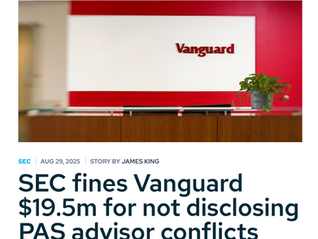- Rubin Miller, CFA

- Feb 27, 2024
- 4 min read
The global stock market is +21% in the last four months, and has continued to scream through all-time highs.
It might feel like finally...some long-awaited upward momentum, and that it will keep going up. Or it might feel bonkers that amidst all the world's complexities, divisiveness, wars and challenges, that obviously stocks must reverse and go down.
If you have feelings at all about the market, that's understandable. You're human.
But if you make portfolio decisions off these feelings, you're letting your humanness get the best of you.
Why is it wrong to be emotional about your investments?
It isn't entirely about being right or wrong. You can be an emotional investor — trading on feelings, anxiety, and hunches — and sometimes have great outcomes.
Or you can be an unemotional investor, and still experience frustrating outcomes. Over short periods, markets are wildly unpredictable and won't always reward clear-thinking or discipline.
Recognizing that you can sometimes make bad decisions and have good outcomes, or sometimes make good decisions and have bad outcomes, is the transformative AHA-moment that can turn you into a less emotional, long-term investor.
Without this realization, investors just tell themselves stories:
Good outcomes? I'm a great investor!
Bad outcomes? No one could have seen this coming!
Luck and uncertainty are precisely why when being forward-looking investors, we need to know more than just how the past turned out, but importantly whether past outcomes provide any useful information to make future decisions.
If that sounds obvious, forgive me — investors continue to choose investment managers based on previous stock-picking performance, even though there is no evidence that someone who previously picked stocks well will do so again in the future.
The study below looks at funds that were in the top 25% of performers over five years, and how they did in the subsequent five years:
Sheer randomness. Of the funds that were top 25% performers, only ~ 20% of them were able to repeat the feat. And there's no reliable way to guess which ones ahead of time. No matter how many times investors hear this data, though, many still assume that someone who performed well before is a good horse to bet on, rather than embracing what the data reflects: there is no information in historical performance.
Remember this the next time your Johnny-Bag-of-Donuts friend talks to you about stocks. If historical performance by professionals isn't reliable for future performance, what does it say about armchair amateurs?
And because investing is a game with immense randomness, once you've designed a reasonable portfolio, don't get too emotional about bad or good outcomes! Over the short-term, you should rarely take credit nor blame for what happens.
Why is it frustrating to be emotional about your investments?
Because the market will not reciprocate the feeling. It is starkly indifferent to your preferences and opinions. It doesn't know you exist, and you will drive yourself bonkers.
And you may go on tilt — what poker players call playing future hands suboptimally out of frustration from previous hands.
You risk trying to claw back something unearned, quickly.
I started writing publicly about investing in late 2021, just before the hellscape that was the 2022 stock market. Until a few weeks ago, for my entire financial writing career, I had only discussed some future-point-in-time when we'd hit all-time highs again.
I have frequently used this quote with clients about avoiding the frustrated on tilt feelings, eschewing FOMO, ignoring CNBC talking heads and product-pushing financial companies. To encourage staying unwavering about our investment philosophy:
I am here today to cross the swamp, not to fight all the alligators.
Rosamund Stone Zander
But now we are there. Markets soaring through all-time highs. Hopefully you have crossed the swamp, too.
🐊 🐊 🐊 🐊 🐊 🐊 🐊 🐊
Investing on hopes and hunches — making emotional decisions — is why so few portfolios earn the actual market return. Investors bob-and-weave at the wrong times, distracted from the empirical evidence about how to effectively engineer a great, long-term investment experience: get the hell out of your own way.
Humanness is the nuisance.
No one knows what happens next, so don't invest like you do.
My suggestion to you at all-time highs is the same as when the market was fumbling. Markets may continue to scream upward, or may plummet downward. Ensure that you can stomach either outcome without feeling the need to change investment philosophies.
If you can't handle missing out on making more money to the upside, you don't own enough risky assets. If you can't handle the amount you'd expect to lose in a downturn, you don't own enough less-risky assets. Greed, envy, fear, nausea...whichever feelings storm your castle when markets whip, you want to create a process where none of them convince you to make tactical market forecasts.
Over short periods, the stock market is entirely unforecastable — and you can't get all the upside without risk to the downside. So design a portfolio that aligns with the purpose of your investments, and stamp it. Maybe that's 60% stocks, 70% stocks or 80% stocks. That's your target and guide. Manage accordingly, emotionlessly.
You don't want to be searching for confidence when you thought stocks would soar but they tanked, or you thought they would tank but they soared. This is a terribly designed, unnecessarily frustrating investment journey...you will quite literally introduce new breeds of financial anxiety you didn't even know existed before.
Instead, be ready to dance with the portfolio that brought you.
Confidence to do so will enable high quality decision-making when shit gets rough.
And shit will get rough again someday. But no one knows when.
End.










